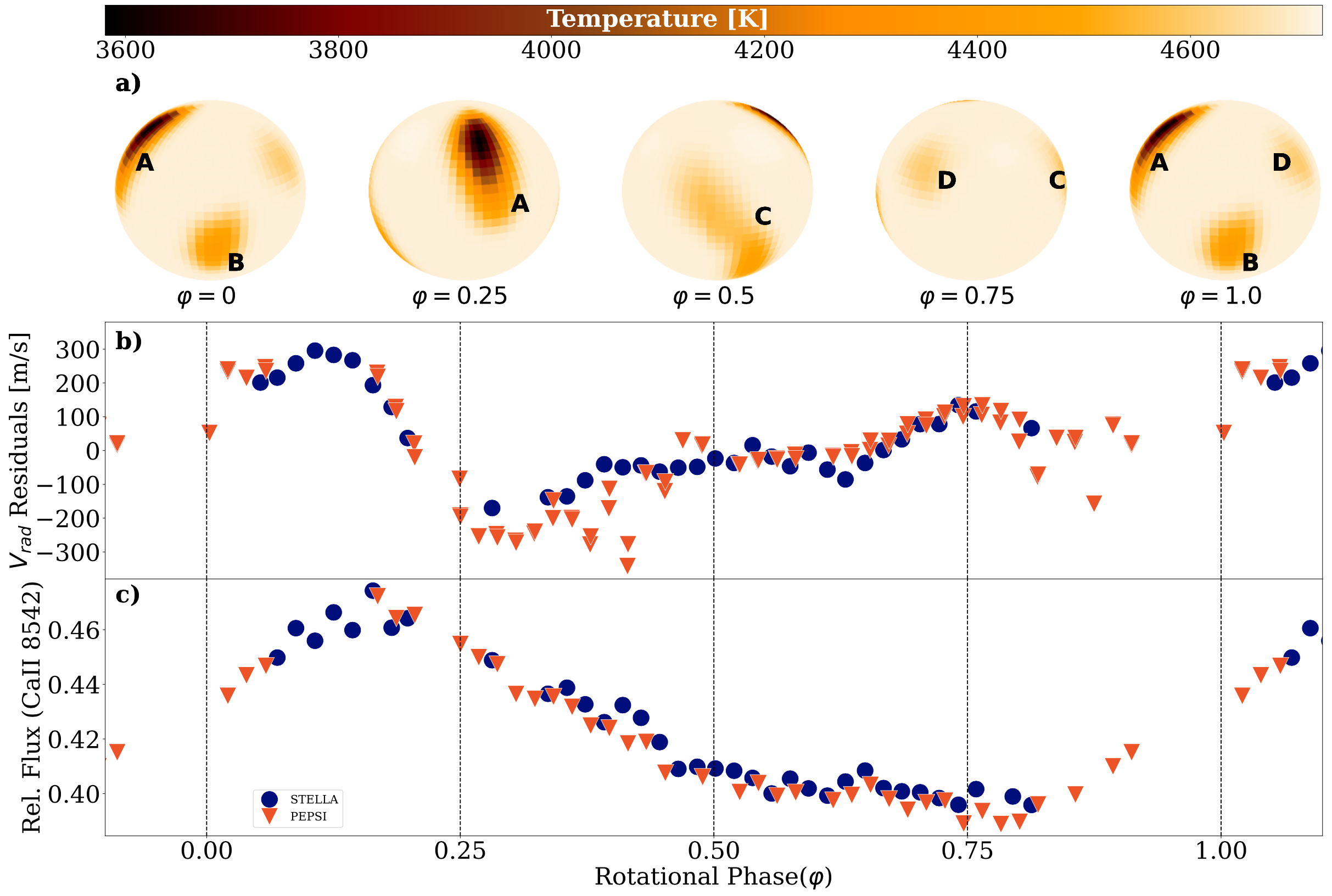Starspots on a rotating stellar surface impact the measured radial velocities and thereby limit the determination of precise orbital elements as well as astrophysical stellar parameters and even jeopardize the detection and characterization of (exo)planets. Phase-resolved high resolution optical spectra from PEPSI and STELLA were recorded over the course of 522 days in 2021-2022. Doppler imaging is used to reconstruct λ And’s starspots with very high resolution (R = 250 000) and high signal-to-noise ratio PEPSI spectra. The Doppler image reconstructs a dominating cool spot with an umbral temperature difference of ≈1000K with respect to the photosphere of 4660K and is likely surrounded by a moat-like velocity field. Three more weaker spots add to the total surface spottedness, which is up to 25% of the visible surface.

Read more: Adebali, et al. 2025, A&A, 695, A89
